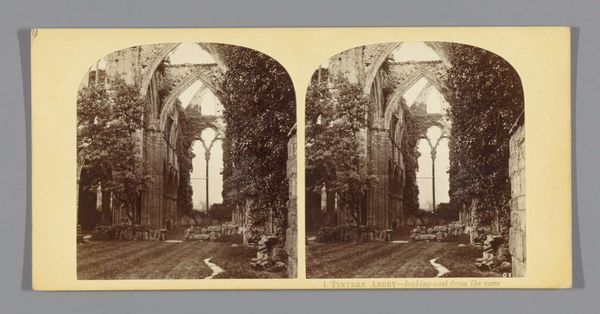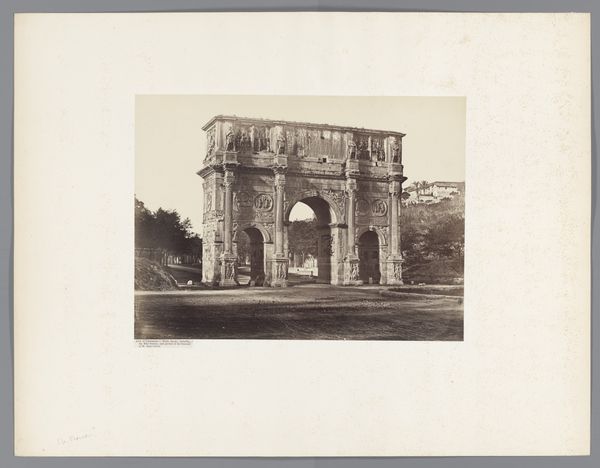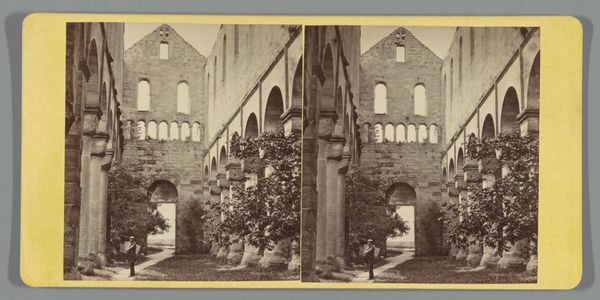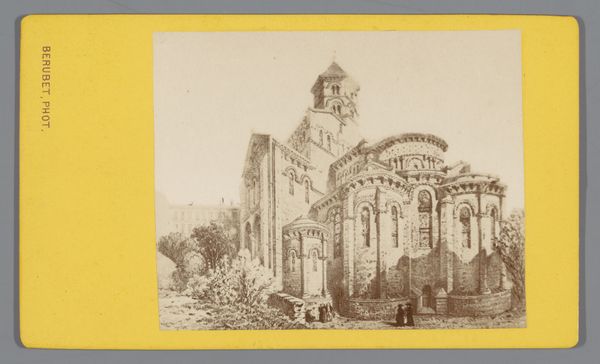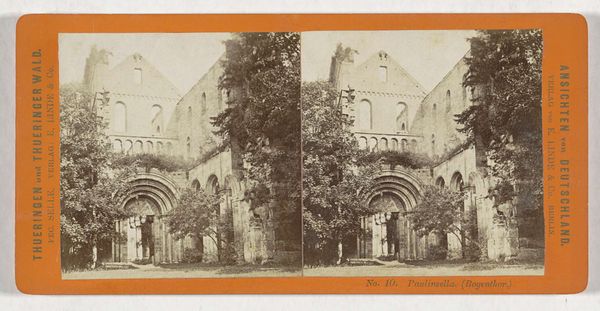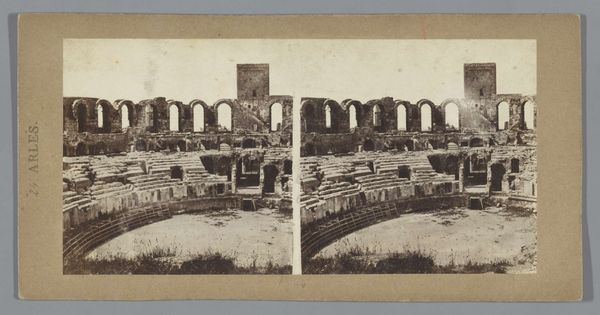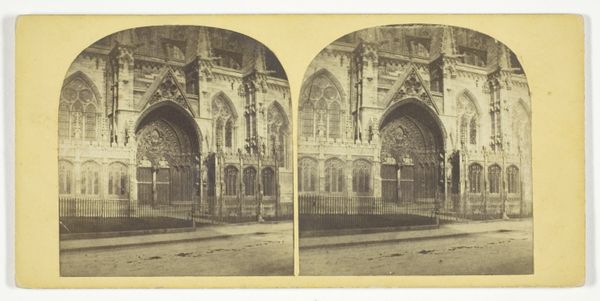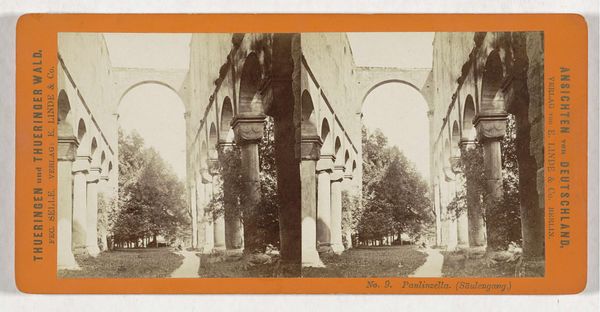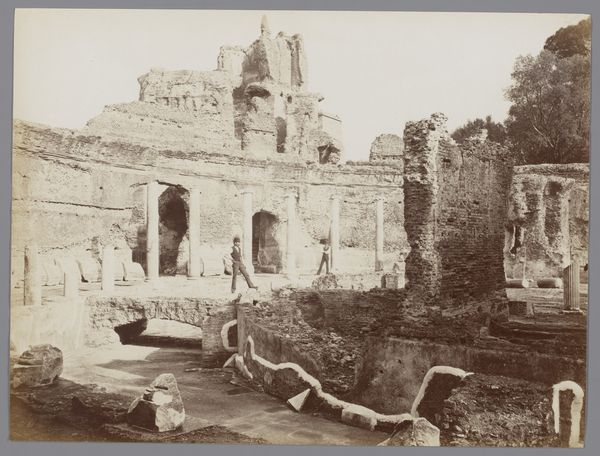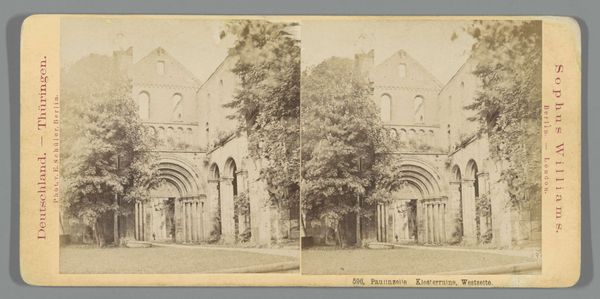
Dryburgh Abbey - Tomb of Sir Walter Scott c. mid 19th century
0:00
0:00
photography
#
still-life-photography
#
16_19th-century
#
landscape
#
photography
#
romanticism
Dimensions: 8.1 × 7.5 cm (each image); 8.4 × 17.4 cm (card)
Copyright: Public Domain
Curator: Here we have "Dryburgh Abbey - Tomb of Sir Walter Scott," a photograph dating from the mid-19th century by G. W. Wilson, preserved now in the Art Institute of Chicago. Editor: Immediately, I’m struck by the ruins and the quietude of the scene. It's incredibly atmospheric and melancholy. You feel a sense of history just oozing from the stones. Curator: Wilson’s work comes at a time when photography was increasingly used to document and promote cultural heritage sites. This stereo photograph of Dryburgh Abbey captures the Romantic fascination with ruins, particularly those connected to literary figures like Sir Walter Scott. Dryburgh Abbey was, indeed, his final resting place. Editor: Right, the abbey is more than just stones; it represents a particular construction of Scottish identity, of literary greatness, tied up in the imperial project. To think about how that's represented here is important; Wilson probably understood it. And the positioning of the solitary figure on the bench – is that meant to evoke Scott himself? Curator: It's left to our interpretation, isn't it? The Victorians, of course, memorialized national figures through various visual and literary forms. The rise of photography also contributed significantly to this process of memorialization, by bringing those images to an international audience. These stereographs were designed to be viewed in special viewers, giving them a 3-D effect, immersing the viewer in the scene. The success of Walter Scott created literary tourism and gave enormous validation to the highlands and Scotland. Editor: So we're left with the tension between authentic historical encounter and romanticized commercial product, then? Even with all this visual romanticizing? I can't escape questions about its impact on perceptions of Scottish identity back then. The gaze that someone directs at this space matters so much. Curator: Exactly, and understanding how images like this, distributed widely, helped to construct ideas about Scotland and its literary history is crucial to engaging with Wilson's work today. These stereo cards offered a convenient way to see a historical spot in an era of more difficult travel. Editor: For me, it is powerful to contemplate those tensions embedded within a single image. It speaks to the multifaceted nature of art and its complex relationship to power. Curator: Agreed, a testament to the enduring appeal—and the inherent complexities—of romantic visions and historical narratives.
Comments
No comments
Be the first to comment and join the conversation on the ultimate creative platform.
